How do you build an actionable Customer Health Score? To tackle this question, Francisca Alliende, Senior Data Analyst at Mentimeter and keynote speaker at SaaSiest, introduced us to a relatable character named Alex. She’s a Customer Success Manager at a fast-growing SaaS company. Churn rates are climbing, and she’s constantly reacting to problems without a clear strategy. With too many customers in her portfolio, Alex is left wondering, “Who should I focus on first?”
How can we help Alex manage this challenge? The answer lies in building an actionable customer health score. Imagine offering Alex a super-accurate, black-box health score that tells her a customer is 99% likely to churn. Sounds great, right? But with Alex already overwhelmed, this information might just freeze her in her tracks, leaving her waiting for the inevitable churn. Instead, what if we built an actionable Customer Health Score tailored for Alex? One that helps her spot the right customers to prioritize and enables her to take preemptive steps before churn occurs.
1. Collect data from both active and churned customers
The foundation of any successful CHS is data. But don’t just rely on data from your current customer base—incorporating churned customers into your analysis is key. When building a CHS, Francesca emphasizes starting with a broad dataset: “You need data from both your existing and churned customers to get a full understanding of customer behavior. This helps you not only understand what’s working but also pinpoint why customers leave.”
Start by collecting key metrics such as product usage, engagement with your company, and other measurable touchpoints. By comparing patterns across both happy and churned customers, you can better identify which behaviors are correlated with retention and which signal potential churn risks.
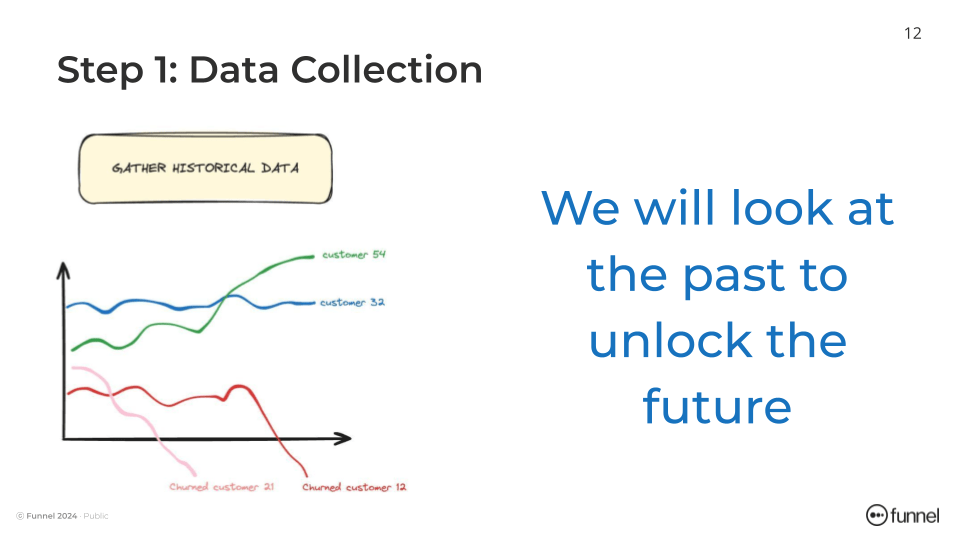
2. Define your health status (Good, neutral, bad)
Once you’ve gathered your data, the next step is to define what “healthy” and “unhealthy” customers look like for your business. This involves segmenting your customers into categories—good, neutral, or bad health—based on your business objectives.
Here’s how these segments are defined:
- Bad health = Customers who have already churned.
- Good health = Customers who have renewed at least once and have been actively engaged with your Customer Success team.
- Neutral health = All other customers who don’t fit into the good or bad categories yet.
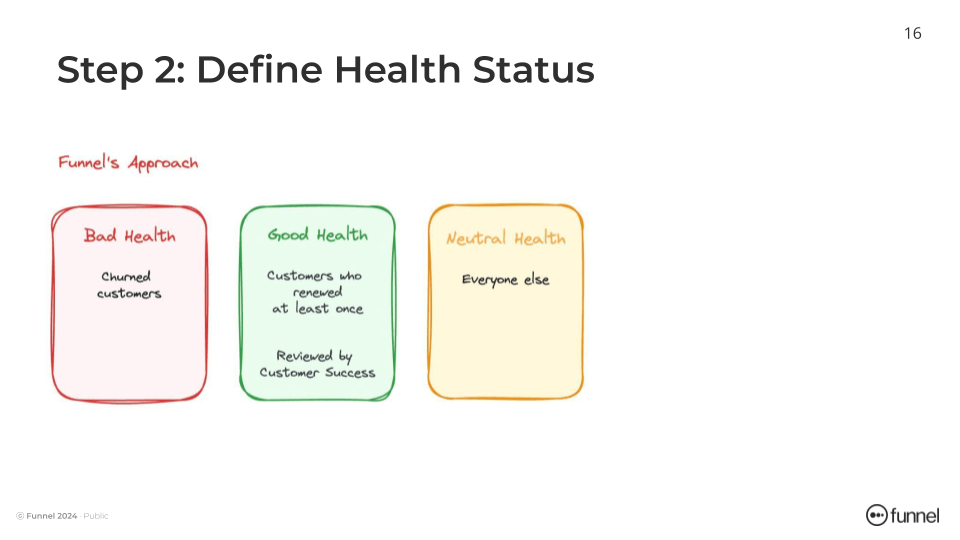
For Funnel, Francesca explains, “We focus on retention, so customers who churned represent ‘bad health,’ while customers who have renewed at least once are labeled ‘good health.’ These customers are the ones we want the rest of our customer base to emulate.”
The key here is to align your CHS with your overall business goals. Whether you’re focusing on retention, expansion, or adoption, make sure your definitions reflect what success looks like for your customers.
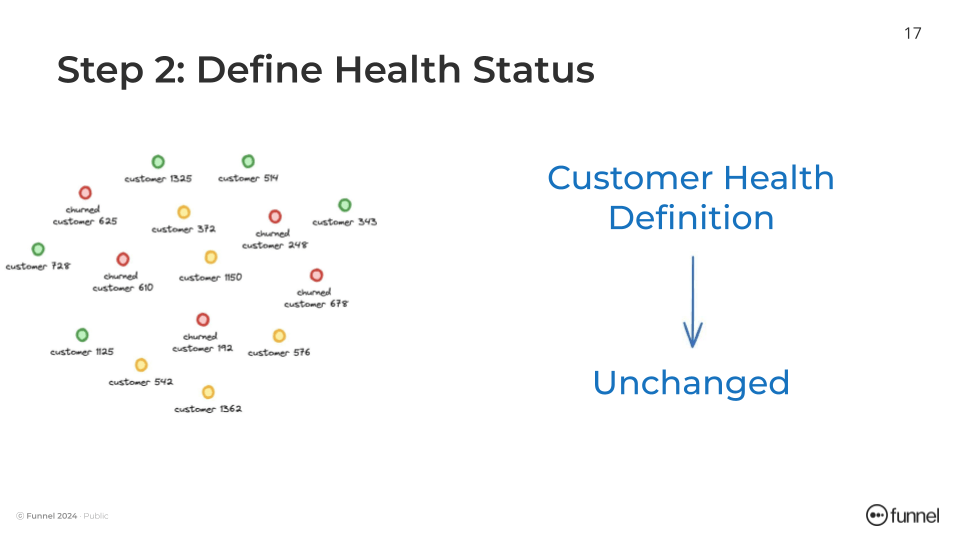
3. Identify and Prioritize Health Indicators
A key part of building an actionable customer health score is identifying health indicators—specific, measurable behaviors that correlate with customer health. These indicators give you the signals needed to distinguish between customers in good health and those at risk of churn.Think of these as behaviors that predict whether a customer is sticking around or about to leave. Common indicators include:
- Weekly active users (WAU)
- Feature adoption
- Engagement frequency
These measurable metrics help you spot trends that differentiate healthy customers from unhealthy ones. But as Francesca emphasizes, the key to making these indicators truly useful is ensuring they’re both predictive and actionable.
“We don’t want an overall health score; we want specific indicators that show where and how we can act,” Francesca explains.
For instance, at Funnel, they noticed that customers who created fewer than 35 custom metrics were more likely to churn. That’s an actionable insight—meaning, it’s a clear sign of churn risk that the team can intervene on.
How do you choose the right health indicators?
Start by testing indicators that show meaningful differences between healthy and unhealthy customers. For example, if weekly active users don’t show a strong pattern, try monthly active users instead.
Tips for when you’re choosing your health indicators:
- Iterate and Test: Data-driven processes are often trial-and-error. If one indicator doesn’t produce clear results, don’t hesitate to experiment with another.
- Stay Flexible: What works for one customer segment might not work for another. Adjust your indicators as you collect more data to stay responsive to different customer behaviors.
By focusing on these actionable and clear indicators, Alex can easily see where her attention is needed—and more importantly, where it will have the greatest impact.
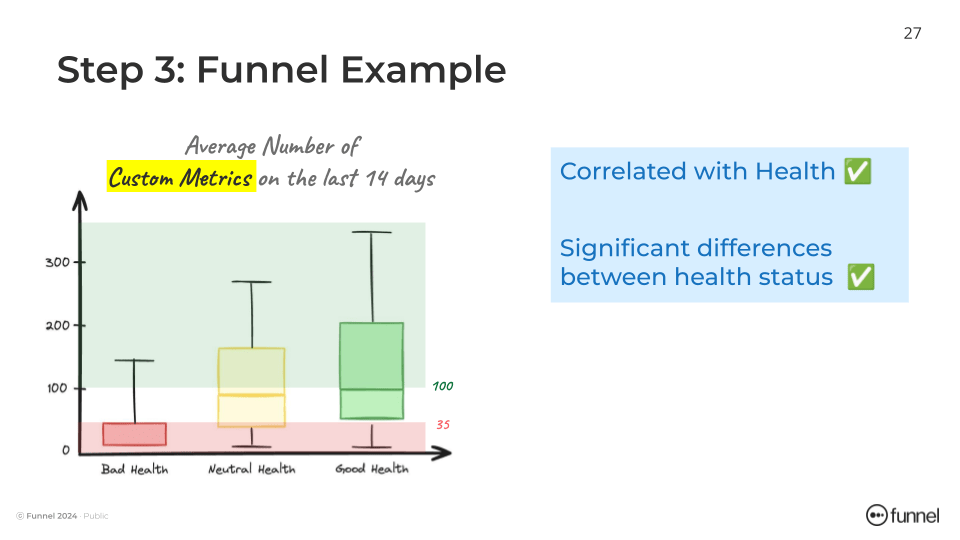
4. Create a scoring system for each indicator
Once you’ve identified key health indicators, the next step is to assign scores for each. This helps you categorize customers and focus on the ones needing attention.
Francesca recommends setting clear scoring rules. For example:
- Less than 3 weekly active users = Bad score
- More than 5 weekly active users = Good score
- Everything in between = Neutral score
This simple scoring system ensures that CSMs have actionable insights and can prioritize customers based on their specific needs.
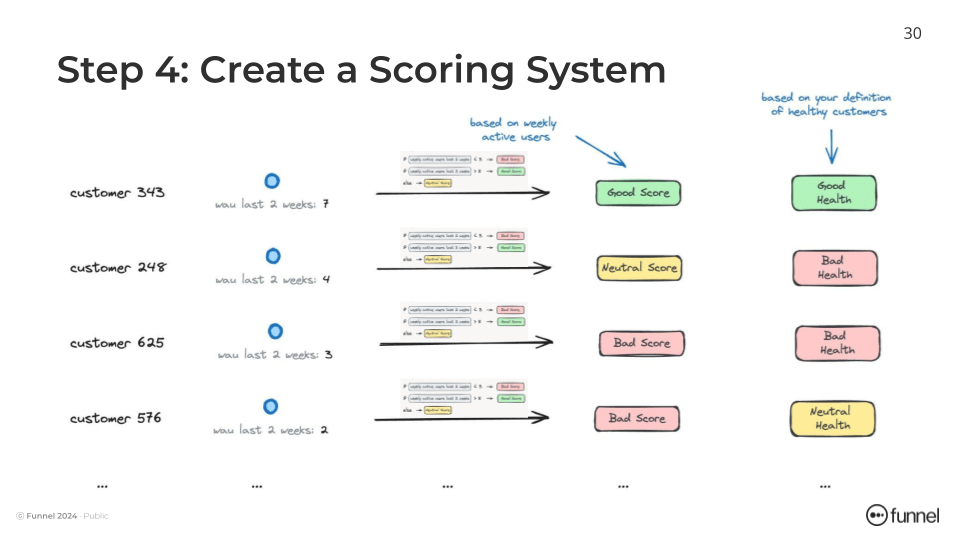
Aggregate the data
Francesca pushed for the importance of looking at the percentage of customers in each score category. For example, if 20% of your customers score as “good,” 30% as “neutral,” and 50% as “bad,” this distribution highlights where you need to focus. Aggregating this data helps you understand overall customer health and prioritize actions effectively, targeting high-risk areas and optimizing strategies for better outcomes.
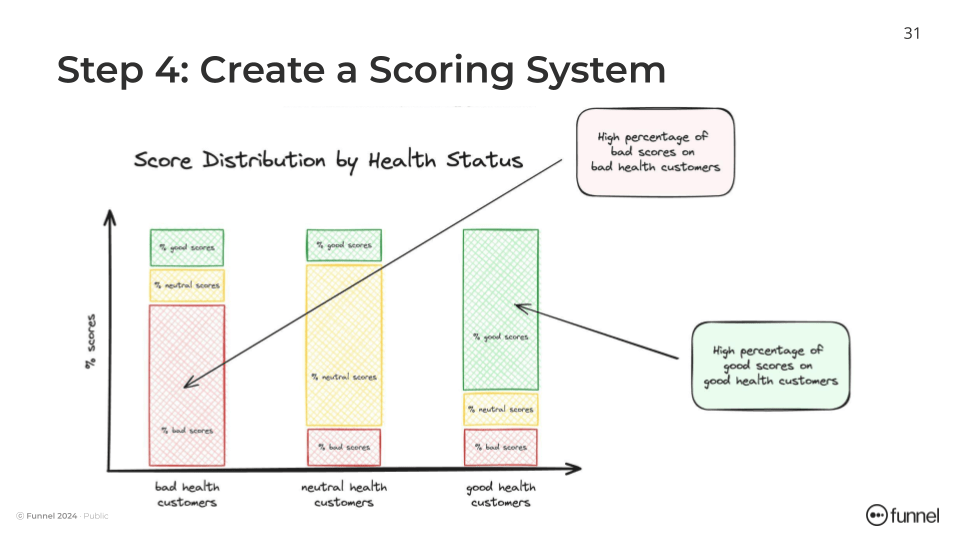
5. Launch and Continuously Improve
The final step is to launch your CHS, but that’s just the beginning. As Francesca points out, “Launch fast, test often, and improve continuously. The sooner you put your CHS into action, the quicker you’ll be able to refine it based on real-world feedback.”
During the rollout, share detailed insights with your CSMs and encourage a feedback loop to see how well the CHS is working in practice. What’s more, it’s essential to implement a feedback mechanism so that your team can help improve the system over time. Remember, correlation doesn’t always equal causation, so fine-tuning will be necessary as more data comes in.
Key steps for implementing a customer health score
- Share Tech Details with the CS Team: Provide comprehensive technical insights to your Customer Success team. This enables them to trigger more effective actions based on the health score.
- Implement a Feedback Mechanism: Treat your health score as an evolving hypothesis. Gather feedback to validate and refine the system, ensuring it aligns with real-world outcomes.
Here’s Francisca’s overall checklist for success
- Launch fast & gather feedback: Rapidly deploy your health score system and actively seek feedback to make iterative improvements.
- Collaborate with domain experts: Include team members with deep product knowledge to minimize blind spots and enhance the accuracy of your health score.
- Prioritize simplicity: Design a straightforward health score that is easy for everyone to understand and act upon.
- Stay persistent: Adhere to your core objectives for the health score, focusing on clearly defined health statuses.
- Focus on retention and churn: Ensure your actions are aligned with business goals, specifically targeting improvements in customer retention and reductions in churn.
By keeping Alex’s challenges in mind and following these steps, you can build a customer health score that’s not only practical but also actionable. The result? A proactive, data-driven approach that empowers your team to get ahead of churn and drive lasting customer success.




